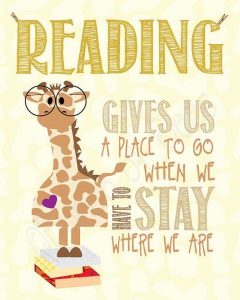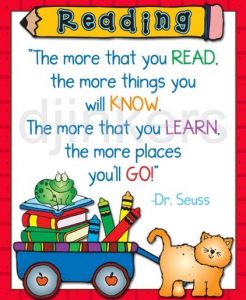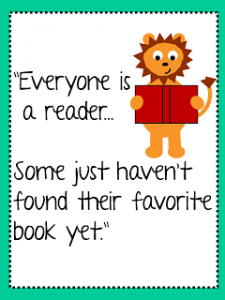Reading at Oak View
Intent
At Oak View Primary School, we recognise that reading is the key to success; reading skills development starts as soon as children enter our Early Years Foundation Stage in the Nursery and continues throughout school, appropriate to the age, ability and needs of our children.
The teaching of reading at Oak View is sequential and progressive as we appreciate that the acquisition of reading skills begins with decoding (sounding words and blending sounds together). Next, comes fluency (the ability to read with speed, accuracy and expressions), then comprehension (processing text and understanding meaning) and finally inference (reading between the lines).
All staff and governors consider the teaching of reading to be a priority and continually strive to improve and develop our practice to ensure that the children are fluent, competent readers by the time they leave our setting.
Reading is at the core of all teaching at Oak View Primary School and children are given the chance to apply reading skills in a range of ways throughout the school day. Our intent is to use reading to teach children about the world around them – they will learn about people, places and events outside of their own personal experiences. Reading will improve children’s vocabulary, leading to more highly-developed language skills and improve the child’s ability to write competently. As well as teaching reading skills, we hope to foster a love of reading in order to enhance imagination, relieve stress, and provide children with entertainment and enjoyment.
Implementation
Phonics / Early Reading
Phonics lessons are used to teach children how to decode letters into their respective sounds, an early reading skill that is essential for them to read unfamiliar words by themselves. The Letters and Sounds Phonics scheme is used to teach phonics; starting in Nursey (Phase 1) and progressing through Reception Class into KS1.
Phonics is taught daily, children have the opportunity to listen for sounds in words and blend and segment through interactive activities based on their next steps. Children also have the opportunity to apply their learning in other areas of the curriculum, they are encouraged and reminded to apply phonics knowledge daily and scaffolds support this within the classroom. Personalised interventions are in place to ensure children not working at the expected standard for phonics catch up quickly.
Comprehension
Across school children access a wide range of comprehension activities. Tasks are appropriate to the ability of the children and have a clear focus. Reading Comprehension skills are firstly taught and modelled before being applied to a range of text types. During comprehension lessons, children are taught skills including; summarising, sequencing, inferencing, comparing and contrasting, drawing conclusions, problem-solving and relating background knowledge. Comprehension sessions are also used to develop children’s vocabulary and language skills.
Guided Reading (KS1) or Whole Class Reading (KS2)
During daily guided reading sessions, teachers read with small groups of children who demonstrate similar reading behaviours and can read similar levels of texts. The text is skilfully chosen so that children can read with adult support, but offers challenge and opportunities or problem solving. During guided reading sessions, a focus is agreed and questioning is used to develop children’s oral comprehension skills and vocabulary. When children are not reading with an adult they access activities on a carousel basis which develop their independent reading skills. National Curriculum objectives drive the key focus.
Shared Reading
Shared reading is used as an opportunity for the teacher to expand vocabulary and model reading fluently, with expression and confidence. It promotes pleasure and enjoyment with texts and develops the children’s comprehension strategies. Key texts are chosen and mapped out throughout the year to develop skills. School are in the process of developing book selections for each year group, ensuring genres are represented and books are appropriate to the National Curriculum objectives of each class.
Individual Reading
Home readers / individual reading books are changed once a week. The children are listened to weekly and their understanding is checked before books are changed, children are encouraged to re-read books. The less able children are listened to more frequently. Books are selected from the appropriate coloured bands and reflect the phonics phase and targets of each child. Independent reading also takes place each morning with a weekly review activity to assess children’s understanding of what they have read. The children have access to an online reading scheme; this is used at home as well as in school.
Reading for Pleasure
Reading Areas are set up in every classroom to promote a love of reading. Within reading areas there are a wide range of stories, poetry books, play scripts and non-fiction texts for the children to read independently, with their peers or with adults, appropriate to their age and ability. Children have the opportunity to read and act out stories, using masks, puppets, small world and other props appropriate to each year group. Children are encouraged to articulate their views on books and authors, this is evident in these areas. Reading is celebrated in school and there are a range of reward systems in place.
- Rationale, The Study of Visual Texts (146.70KB)
- Reading in Reception (88.26KB)
- Reading in Year 1 (90.03KB)
- Reading in Year 2 (90.54KB)
- Reading in Year 3 (92.10KB)
- Reading in Year 4 (92.89KB)
- Reading in Year 5 (91.12KB)
- Reading in Year 6 (92.28KB)



